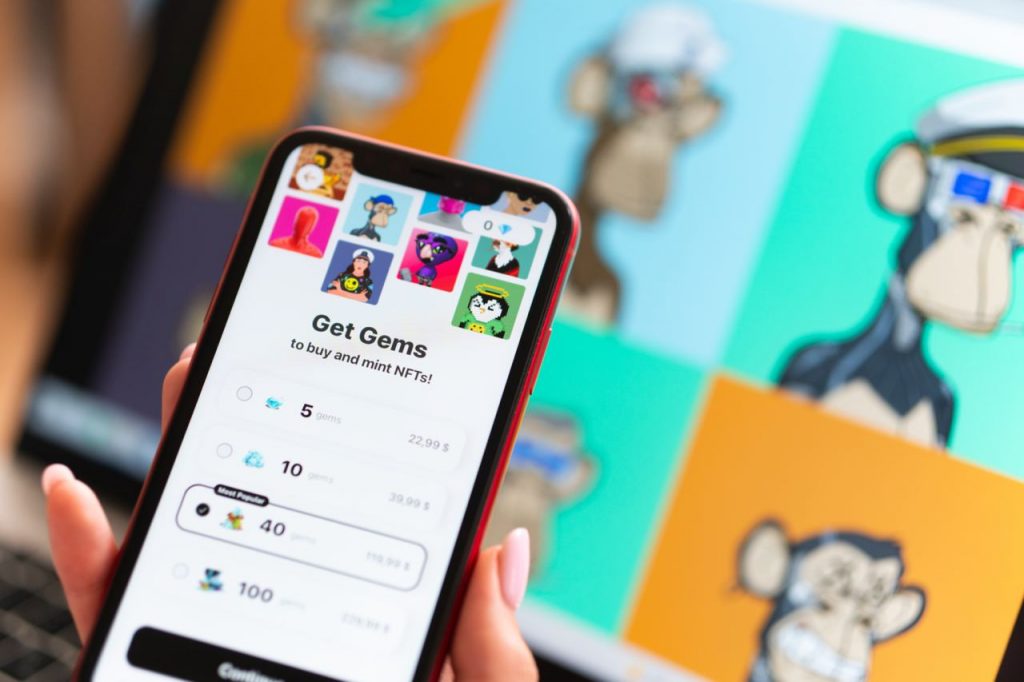
When the first wave of NFT games hit the scene in the early 2020s, the idea of owning a digital sword, a unique character skin, or even an in-game pet that could be sold for real money felt revolutionary. Overnight, gamers went from renting pixels to becoming true owners of their virtual assets. But just like any disruptive technology, the hype surrounding NFT gaming quickly collided with skepticism, regulation, and market volatility.
Now, in 2025, the conversation has shifted. Instead of asking, “Are NFTs in gaming just a trend?” we’re asking, “What role will NFTs play in the future of gaming and digital ownership?”
This article will take you on a journey through the current state of NFT gaming, the challenges it faces, and the exciting future it promises—from cross-platform economies to the metaverse and beyond.
What Makes NFTs Different in Gaming?
Traditional gaming economies have always had digital items—think of rare skins in Fortnite or trading cards in Hearthstone. The difference with NFTs is true ownership. When you buy a digital sword in a regular game, it’s still stored on the company’s servers, meaning it can vanish if the game shuts down.
NFTs, however, are stored on blockchain networks, giving players verifiable ownership that extends beyond the game’s servers. That means you can:
- Sell it on an open marketplace
- Use it across multiple games (if developers allow interoperability)
- Retain it even if the game ceases to exist
The World Economic Forum highlights that digital ownership via blockchain is reshaping how people view online economies, extending far beyond just collectibles. This is why major developers and publishers are experimenting with NFTs, despite the controversy surrounding them.
The Current State of NFT Gaming in 2025
NFT gaming had its boom and bust moment in 2021–2022. Popular titles like Axie Infinity skyrocketed before facing sharp declines due to economic imbalance and market speculation. Critics dismissed NFTs as a “cash grab.”
However, the industry didn’t disappear. Instead, it evolved. Today, we’re seeing:
- Play-and-earn models replacing the unsustainable “play-to-earn” hype
- Mainstream studios like Ubisoft and Square Enix exploring NFT integration
- Regulatory clarity in regions like the EU and Asia, protecting players from scams
- Greater focus on gameplay quality rather than pure monetization
According to CoinTelegraph, NFT games now prioritize sustainability, offering rewards that add value to the gaming experience rather than solely focusing on profit. This shift has created a more balanced relationship between developers and players.
Why Digital Ownership Matters
Imagine you’ve spent five years building a character in World of Warcraft. You’ve earned rare armor, weapons, and mounts. In today’s system, if the game ends or your account is banned, you lose everything.
NFTs change this equation by ensuring your time and effort are preserved in transferable assets. Just like you own a piece of digital art on OpenSea, you could own your in-game achievements in a blockchain-secured format.
This concept aligns with McKinsey & Company’s reports on the growing digital economy, where virtual goods are becoming as valuable as physical ones. With younger generations spending more on digital items than physical ones, NFTs provide the infrastructure to protect these investments.
Challenges Holding Back NFT Gaming
Of course, the road to mass adoption is far from smooth. The industry still faces several hurdles:
- High entry costs – Some NFT games require expensive initial purchases, deterring casual gamers.
- Scams and rug pulls – Weak regulation in early years created distrust among players.
- Environmental concerns – Though many blockchains like Polygon and Solana are eco-friendly, the stigma from early proof-of-work chains lingers.
- Interoperability limits – Owning an NFT doesn’t automatically mean you can use it in every game. Developers must design systems that support it.
As MIT Technology Review points out, NFT gaming’s future depends on addressing these issues through innovation and regulation.
Opportunities Ahead: The Future of NFT Gaming
Despite challenges, the future looks incredibly promising. Here’s where things are heading:
1. Cross-Platform Economies
Picture buying a sword in one RPG and using it in another from a different studio. While still experimental, interoperability is one of the most exciting possibilities. Ethereum scaling solutions like Immutable X are making this a reality.
2. Metaverse Integration
As platforms like Meta’s Horizon Worlds and Roblox expand, NFTs could become the glue connecting digital worlds. Players might carry their avatars, clothing, or even property between universes.
3. Smart Contracts for Gameplay
Imagine tournaments where winnings are automatically distributed via blockchain-based smart contracts. No middlemen, no disputes—just instant, verifiable rewards.
4. Community-Driven Economies
NFTs give players a stake in a game’s success. Some titles already offer governance tokens that allow players to vote on updates, creating player-owned economies.
5. Luxury Brands and Collectibles
Brands like Nike and Adidas have launched NFT sneakers usable in games. The future may see collaboration between luxury brands and gaming studios, blending real-world prestige with virtual fashion.
Comparison Table: Traditional Gaming vs. NFT Gaming
Traditional Gaming vs. NFT Gaming: What’s the Difference?
| Feature | Traditional Gaming | NFT Gaming |
|---|---|---|
| Ownership | Items remain under the developer’s control | Players hold blockchain-based ownership |
| Transferability | Limited to in-game use only | Can be sold or transferred across marketplaces |
| Longevity | Assets lost if game shuts down | Assets remain on blockchain |
| Player Economy | Centralized and controlled by developers | Decentralized, player-driven economies |
| Value Creation | Limited resale or trade value | Assets can appreciate in real-world value |
Expert Insights on NFT Gaming
Industry leaders are weighing in on the long-term potential:
- Yat Siu, co-founder of Animoca Brands, argues that NFTs represent a “shift from digital feudalism to digital capitalism,” giving players true ownership of their digital lives.
- Ubisoft’s Quartz initiative demonstrates that mainstream developers are willing to experiment with NFT-backed items, even if the rollout faces resistance.
- Harvard Business Review notes that digital ownership will be a critical pillar of the broader Web3 ecosystem, beyond just gaming.
FAQs About NFT Gaming and Digital Ownership
1. Are NFT games only about making money?
Not anymore. The focus has shifted from “play-to-earn” to “play-and-earn,” emphasizing gameplay quality and sustainability.
2. Do I need cryptocurrency to play NFT games?
Some games require crypto wallets, but newer platforms allow credit card payments for easier onboarding.
3. Are NFTs environmentally harmful?
Most NFT games now use eco-friendly blockchains like Polygon or Tezos, which consume far less energy than older proof-of-work systems.
4. Can I really use the same NFT across multiple games?
Technically yes, but it depends on developers agreeing to support interoperability. This is a growing but still developing trend.
5. What risks should I watch out for?
High entry costs, scams, and unproven projects remain risks. Always research before investing time or money.
6. Will traditional gaming companies adopt NFTs?
Yes, though cautiously. Studios like Ubisoft, Square Enix, and EA have already shown interest, while others are still observing.
Conclusion: Where We’re Headed
The future of NFT gaming isn’t about replacing traditional games—it’s about enhancing them with digital ownership and decentralized economies. While early experiments were messy, the lessons learned are paving the way for more sustainable and player-focused ecosystems.
As blockchain becomes mainstream and regulations mature, owning your digital sword, rare character skin, or virtual land won’t be seen as strange—it will be the norm. Gamers will expect to keep what they earn, trade across worlds, and build wealth in both physical and digital realms.
The next decade of gaming won’t just be about fun—it will be about ownership, creativity, and freedom. Those who adapt will thrive in this new era of play, where pixels hold real power.

